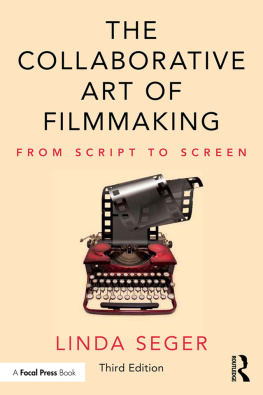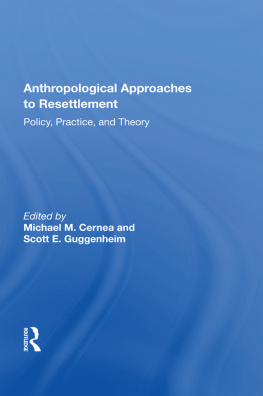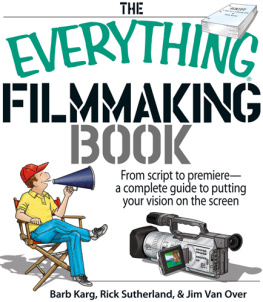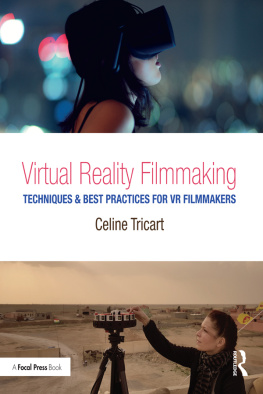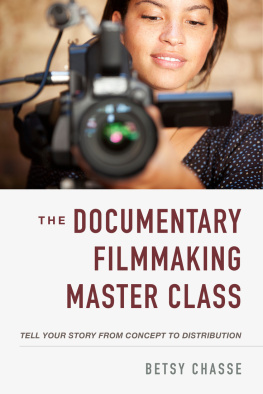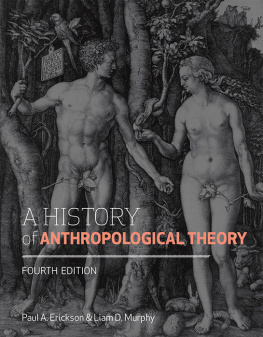ANTHROPOLOGICAL FILMMAKING
VISUAL ANTHROPOLOGY
A series of books edited by Jay Ruby, The Center for Visual Communication, Mifflintown, Pennsylvania
Volume 1 | ANTHROPOLOGICAL FILMMAKING |
Anthropological Perspectives on the Production of Film and Video for General Public Audiences |
Edited by Jack R. Rollwagen |
Volume 2 | MIDDLETOWN |
The Making of a Documentary Film Series |
Dwight W. Hoover |
Additional volume in preparation |
Volume 3 | THE FILMS OF JOHN MARSHALL |
Edited by Jay Ruby |
ANTHROPOLOGICAL FILMMAKING
Anthropological Perspectives on the Production of Film and Video for General Public Audiences
Edited by
Jack R. Rollwagen
State University of New York, Brockport
Copyright 1988 Harwood Academic Publishers.
All rights reserved.
First published 1988 by Harwood Academic Publishers.
This edition published 2013 by Routledge
2 Park Square, Milton Park, Abingdon, Oxon OX14 4RN
711 Third Avenue, New York, NY 10017
Routledge is an imprint of the Taylor & Francis Group, an informa business
No part of this book may be reproduced or utilized in any form or by any means, electronic or mechanical, including photocopying and recording, or by any information storage or retrieval system, without permission in writing from the publisher.
Library of Congress Cataloging-in-Publication Data
Anthropological filmmaking.
(Visual anthropology, ISSN 0897-1463; v. 1)
Includes index.
1. Motion pictures in ethnology. 2. EthnologyMethodology I. Rollwagen, Jack R. II. Series.
GN347.A58 1988 306.0208 88-6834
ISBN 3-7186-0478-7
Cover photo reproduced courtesy of Asen Balikci.
CONTENTS
Jay Ruby
Jack R. Rollwagen
Timothy Asch
Asen Balikci
Peter Biella
John Collier, Jr.
Linda Connor
James C. Faris
Solveig Freudenthal
Maurice Godelier
Paul Hockings
Susanna M. Hoffman
Allison Jablonko
Sabine Jell-Bahlsen
George Klima
Jerry W. Leach
June Nash
Jon Olson
Colette Piault
Jack R. Rollwagen
Don Rundstrom
Andr Singer
VISUAL ANTHROPOLOGY is a book series devoted to the illumination of the human condition through a systematic examination of all that is made to be seen. It is our intention to demonstrate the value of an anthropological approach to the study of the visual and pictorial world. We intend to present ethnographic studies of the cultural complexities of pictorial media production, analyses of the visible world of non-verbal communication from micro-studies of body movement to macro-views of the built environment, and unique attempts to communicate an anthropological understanding through pictorial means. The result will be a deepening of our knowledge of how visual and pictorial communication functions in our quest to make meaning.
Jay Ruby
Jack R. Rollwagen
Department of Anthropology
SUNY College at Brockport
The anthropological filmmaker, just like the ethnographer, must be content to present something about a dynamic process at a particular moment in time regardless of the fact that all of the variables are constantly in flux. Tribal peoples are vanishing. Anthropological interests and perspectives have changed greatly during the century of the evolution of the discipline. The 16mm equipment that made ethnographic film a reality in the period following World War II is now sharing the technological arena with new advances in technology (video camcorders and microcomputers for editing, for example) which allow many more filmmakers to explore the possibilities of preparing visual documents which reflect their own interests and perspectives.1
The purpose of this work is to make available a collection of articles by individuals who are both anthropologists and filmmakers. Most of the earlier works available to readers interested in anthropological filmmaking are either books or articles authored by a single individual (which results in only one individuals perspective) or collections of articles in which a large proportion of the authors are not anthropologists (which is not particularly helpful to one who wishes to understand how anthropologists make films). It is my belief, and it was that belief which led me to the editing of this book, that the understandings which anthropologists have who wish to make films are quite different from the understandings of non-anthropologists who wish to make films. It was my conclusion that much of the material that is available to guide the anthropologist who wishes to begin an exploration of filmmaking is of little value simply because the conceptual framework which non-anthropologists bring to filmmaking is not sophisticated in those areas which anthropologists guide anthropological filmmaking. I hasten to add that this does not imply that non-anthropologist filmmakers are not sophisticated in their own frameworks. But simply that the anthropological framework (which is what makes what anthropologists do anthropological film) makes different demands on the anthropologist, demands that may not be considered important or even relevant to non-anthropologists. The preceding statement, complicated as it may be, is not intended to suggest that anthropologists who make films will all make films alike or out of a common conceptual framework. The very works in this edited volume will attest to that. Anthropology, like any academic discipline, has its own diversity, its own opposing points of view, and an evolutionary process which constantly introduces new conceptual tools and positions. Thus, the perspectives, conceptual tools, theories, arguments, and practices of earlier anthropology exist as a set of ancestors for the guidance of contemporary anthropologists. And, like any other practice, anthropologists draw upon the perspectives, conceptual tools, theories, arguments, and practices of non-anthropologists and in adopting them adapt them to make them their own.
In most contemporary discussions of anthropological filmmaking, the assumption is that the filmmaking is for research purposes or that the audience for the film will be classroom audiences (particularly classrooms in which anthropologists will be present to interpret the film). By contrast, the specific purpose of soliciting the articles in this edited book was to bring together a collection of articles on anthropological filmmaking in which the authors discuss the processes and problems in making anthropological films for general public audiences, whatever the ultimate mechanism of distribution. Thus, one theme which is explored in this book is the problem of communication. In this case, the communication problem is (1) how to present the conclusions that a particular anthropologist has arrived at in the course of many months of fieldwork to an audience which has not had the benefit of the same amount of time in the field; and (2) how to present something about the nature of the cultural systems of the subjects of the film to that audience. In the first instance, the focus is upon the anthropologist as interpreter; in the second stance, the focus is upon the people who are the subjects of the anthropological film. This problem of conceptualization, translation, and communication lies at the center of anthropological filmmaking, since it demands that the person who does the anthropological filmmaking understand the nature of the distortion that he/she as filter is.





![Jon Fitzgerald - Filmmaking for Change: Make Films that Transform the World [2nd Ed.]](/uploads/posts/book/436017/thumbs/jon-fitzgerald-filmmaking-for-change-make-films.jpg)
